 Conventional Training Submarines: USS Mackerel, Marlin 1953-1973. T-1/T-2 later SST-1/SST-2
Conventional Training Submarines: USS Mackerel, Marlin 1953-1973. T-1/T-2 later SST-1/SST-2Cold War US Subs
GUPPY | Barracuda class | Tang class | USS Darter | T1 class | X1 class | USS Albacore | Barbel classUSS Nautilus | USS Seawolf | Migraine class | Sailfish class | Triton class | Skate class | Skipjack class | Tresher class | Sturgeon class | Los Angeles class | Seawolf class | Virginia class
Fleet Snorkel SSGs | Grayback class | USS Halibut | Georges Washington class | Ethan Allen class | Lafayette class | Ohio class | Colombia class
The T-1-class submarines were among the smallest operational submarines ever built for the United States Navy. Two experimental midgets designed for training submarine personnel, testing new equipments. They would have a career spanning 19 years, started under the programme SCB 68 experimental auxiliary submarine (AGSS-570) and later re-rated for training as T-1/2 and later SST-1/2, or USS Mackerel and USS Marlin from 1956. They replicated also to the coastal Soviet M-class, with a crew of 16, still in service in 1950. The latter were effective in the Baltic, Back and Mediterranean Seas. They had the secondary role to provide a suitable small submarine for frigates and destroyers training to US and NATO anti-submarine warfare. Both built at General Dynamics entered service in 1953, based in Florida and Caribbean waters, and decommissioned in 1973.
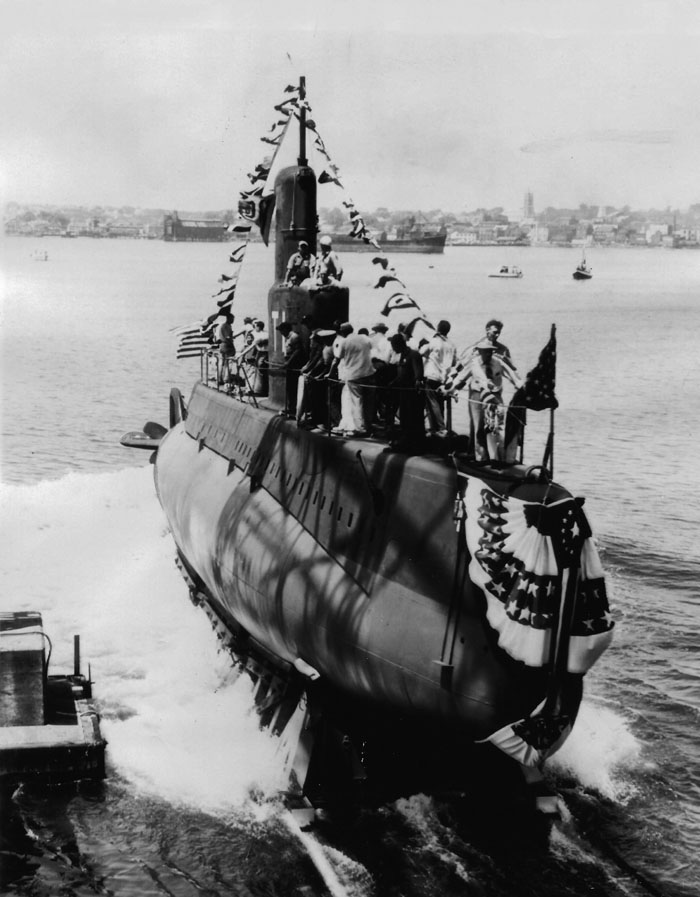
Launch of T-1 (navsource)
The fifties USN training subs
Development of the SBC 68 programme
They started under a different programme, called SBC 68, the first boat being built as the
Also called the T-1 class in many publications, the Mackerel class were quite odd as submarines, surrounded by large conventional attack models and even larger nuclear ones. Instead of using WW2 vintage subs, or even their modernized “fleet snorkels” the Navy wanted to develop a specific class of training submarines since technology went to great leaps since 1946. They would be the perfect tools for a rapidly growing fleet of modern submarines, tailored for their role, small and cheap to operate with all systems requited, a small nucleus crew acting as instructors and accomodations for would-be submariner cadets and offering all the latest panel of equipments developed in the 1950s.
They also had other roles. Under the programme project SBC 68, they were to test new equipments, shown how small a modern submarine could be built, and were to provide a more modern, more accurate small submarine target for frigates and destroyers training as well as provided NATO allied valuable anti-submarine warfare skills.
Lastly, if the cold war was to turn hot, they constituted at the extreme a still valuable model that could be mass built in no time, as cheaply as possible, capable of crossing the Atlantic with 2,000 nautical miles (3,700 km) and serve in the Mediterranean, and small seas such as Baltic and Black sea. They were certainly not as advanced as small attack submarines as were the Barracuda class though. As midgets, they were very much emulating the Soviet M-class. But their single tube limited effectiveness and single propeller, their agility as well as not the speed ideal to escape after detection.
Construction

Nice cutaway on popsci from July 1954 src
They were both ordered to the Electric Boat Division of General Dynamics Corporation, Groton, Connecticut and started in 1952. The first, T-1, was laid down initially as AGSS-570, her experimental boat hull number, on 1 April 1952, Launched on 17 July 1953 and Commissioned 9 October 1953. Her sister T-2 was laid down later in May 1952, Launched on 14 October 1953 and Commissioned on 20 November 1953. They would change name later as SST-1/2 in 1954 and took standard sub names, Mackerel and Marlin, from 1956 onwards. The previous mackerel was an interwar lead-boat of a class leading to the GATO standard in 1941.
Dictionary of American Naval Fighting Ships, makes no mention of a commissioning instead saying “placed in service” in 1953. NavSource however pointed tha USS Marlin (SST-2), was “commissioned in 1953, six weeks after Mackerel entered service” apparenntly she was never commissioned as well. NavSource also oddly stated that Mackerel was “commissioned in 1971” and today sources are conflicting about it. I’ll stay both with Conway’s and wikipedia on this.
Design of the class
Hull and general design
These were fairly small submarines indeed. Displacing 303 long tons (308 t) surfaced and 347 long tons (353 t) submerged for an overall lenght of 131 ft 3 in (40.01 m), and a Beam of 13 ft 7 in (4.14 m) a Draft of 12 ft 2 in (3.71 m). By their silhouette, they looked like smushed conventional attack subs, with a short, stubby yet fine hull and a tall standard “L” shaped fin which emulated most conning towers used on other subs at the time. The lower part was the bridge, the higher, aft part was there to support and encase the masts for snorkel, radar, navigation, communication antenna and periscopes. They were well shaped, following the streamlining of other models at the time derived from the WW2 German Type XXI. No teardrop hull yet. They had no forward diving planes, only rear ones. The rear section was shaped like a torpedo, with a cross-shaped set of struts on which were attached the horizontal diving planes and rudder. They were powered by a five-bladed bronze propeller. The crew comprised 2 officers and 16 enlisted men. The latter were the ones instructed.
Powerplant
They were powered by a single Diesel-electric unit driving a single 5-bladed screw and shaft. The power unit comprised two General Motors Diesels which totalled 250 shp or 190 kW, coupled with a single Elliott electric motor (380 shp (280 kW) and single 1 battery. It was recoignised as silent enough for stealthy operations. Not the fastest boat around the T1 class was only able to reach
a modest 10 knots (19 km/h; 12 mph) surfaced and 10.5 knots (19.4 km/h; 12.1 mph) when submerged. As for autonomy, 2,000 nautical miles (3,700 km) surfaced at 10 knots (19 km/h) as stated above.
By the way, Diving depth operational was 65 meters (213 ft) which is barely enough but only fitting for near-closed seas and shallow waters.
Armament
The T1 class were limited by design, due to their very small size, to a single Mk 48 21 inch (533 mm) torpedo tube. When completed in 1953:
Mark 16 (Mod 3) 4,000 lb (1,800 kg), with a 746 lb (338 kg) Torpex or HBX (later used HBX-3) 960 lb (440 kg) Torpex (later used HBX) warhead and turbine (13,700 yd (12,500 m)). Later they wre upgraded to heavy torpedoes when the tubes were changed.
The Mark 33 for example (1949) were acoustic (passive) models which carried 550 lbs. (249 kg) HBX to 15,000 yards (13,710 m)/27 knots.
It’s possible they would operate later the The 19″ (48.3 cm) Mark 37 and Mark NT37.
Introduced in 1957 for the 1st generation, Mods 0 weighted 1,430 lbs. (649 kg) for 11 ft 3 in (3.429 m) in lenght. They carried a 330 lbs. (150 kg) HBX warhead, at either 10,000 yards (9,140 m)/26 knots or 23,500 yards (21,490 m)/17 knots. They were powered by an Electric-Battery and guided by an Active and passive acoustic sonar. Later versions had an Otto fuel engine and were Wire guided.
Sensors
No sonar indicated which means the T1 class was probably only equipped with a simple acoustic listening device. Navypedia indicates the JP, and JT sonars. The latter was probably either the WW2 model of postwar BQR-3 comprising a Talkback Interphone Amplifier and its Control Unit, Speaker Unit, Headset Assembly, Converter Amplifier, JP-1 Audio Amplifier relatively similar to the JP-2, JP-3 and Hydrophone Assembly with its Baffle and Sound-Absorbing Coupler.

Mackerel as built.
⚙ specifications |
|
| Displacement | 303 long tons (308 t) surfaced, 347 long tons (353 t) submerged |
| Dimensions | 131 ft 3 in x 13 ft 7 in x 12 ft (40 x 4.14 x 3.7 m) |
| Propulsion | 1 shaft, 2 GM Diesels (total 250 shp (190 kW), 1 Elliott electric motor (380 shp (280 kW), 1 battery) |
| Speed | 10 knots (19 km/h; 12 mph) surfaced, 10.5 knots (19.4 km/h; 12.1 mph) submerged |
| Range | 2,000 nautical miles (3,700 km) surfaced at 10 knots (19 km/h) |
| Armament | 1 × 21 inch (533 mm) torpedo tube |
| Test depth | 225 ft (69 m) |
| Sensors | JP-JT sonars |
| Crew | 2 officers, 12 enlisted men |
 USS Mackerel (SST-1)
USS Mackerel (SST-1)
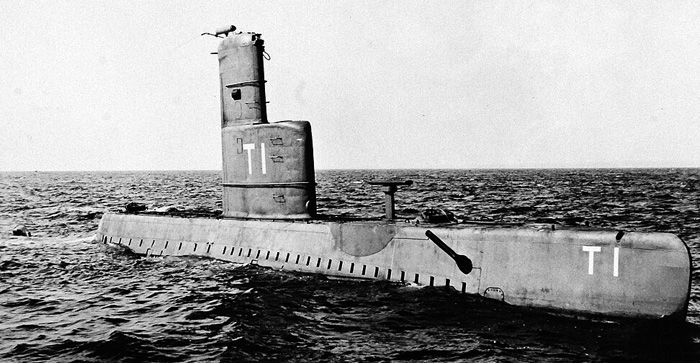
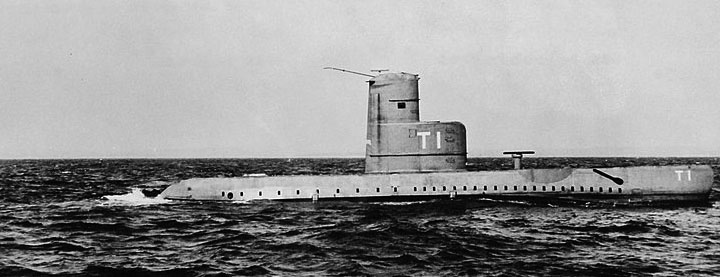
After completing sea trials at New London, then Massachusetts Bay she departed in February 1954 for Key West in Florida for operations with the submarine/ASW school of southern Florida and Guantanamo Bay, Fleet Training Group. On 15 July 1956 she renamed Mackerel (hull SST-1) and took part in several fleet exercises off the Coast, both for training assignments and as target, notably for the Fleet Sonar School at Key West. She also cruised while testing new equipment intended for future submarines. On 2 April 1957 she took part in a sound-damping project off Annapolis and this went on in the 1960s.
In 1963, she made an evaluation voyage from Key West on 8 July 1963 to the British West Indies. She tested various materials and souding devices related to submarine hulls over two‑week and returned in the West Indies in February 1964 for the same. From 7 March 1965 to 4 April 1965, she joined USS Marlin (SST-2) but also USS Amberjack (SS-522), Batfish (SS-310), and Chivo (SS-341), with TFC Mine Force for mine warfare maneuvers.
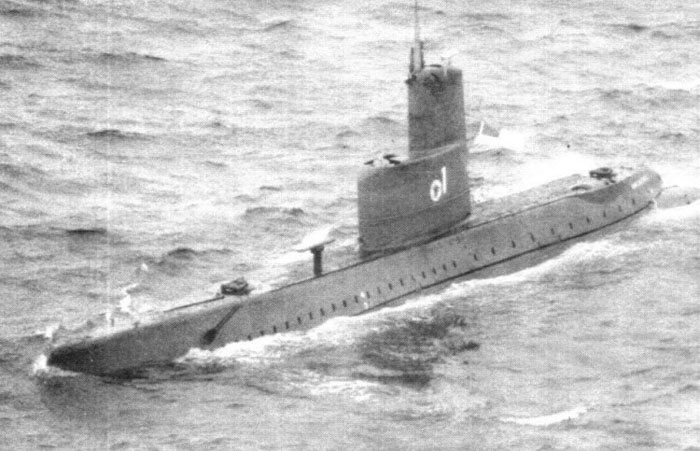
USS Mackerel with her later sail symbol
By May-June 1966, she was back at Electric Boat to be fitted with special equipment, headed for Key West on 26 June 1966 and started experimental work in 1966-1967 amining ans underwater reception emission of data. She also tested the NR-1 Deep Submergence Craft which had keel-mounted wheels to explored the ocean floor as well thrusters and external television cameras plus a manipulator arm and experimental sonar. This revolutionary craft was tested to the bottom some 225 times over nine-month and completed the assignment by March 1967, after which this was removed. She focused more on shiphandling training for junior officers that summer 1967, until entering the drydock at Key West.
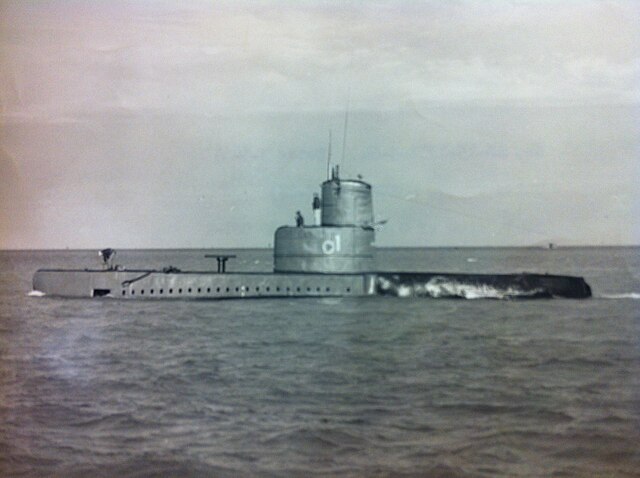
Next she spent the rest of the year and the next as submerged target to train sonar operators doubling for shiphandling training, and target for surface/air ASW forces between Florida and the Caribbean until the early 1970s. In 1971, 1972, she was the target boat of the Atlantic Fleet, also off Mayport/Jacksonville and still controversially, it seems she was at last commissioned in 1971, just to make her last dive on 21 July 1972 and being placed into reserve with a reduced crew for junior officer/midshipman training surfaced until October 1972. Sghe was decommissioned on 3 January 1973 in a dual ceremony with her sister at Naval Station Key West and stricken, sunk as target off Puerto Rico on 18 October 1978.
 USS Marlin (SST-2)
USS Marlin (SST-2)
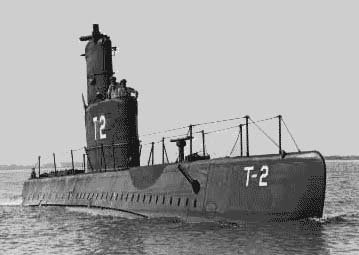
USS Marlin entered service on 20 November 1953 with Lieutenant Edward Holt in command. She made her shakedown in the Massachusetts Bay area and by January 1954 sailed for her homeport at Key West, close to the sub school. But unlike her sister mostly used for experiment, Marlin entered Submarine Squadron 12, Atlantic Fleet, and started operations from southern Florida to Guantánamo Bay for over ten years, as target and training ship and sometimes fitted with new equipment to tests and experiment with new tactics.
Renamed Marlin on 15 May 1956 she made cruises to Guantanamo Bay in 1956, 1958, 1960, 1961 and by March 1963, the joined the National Defense Industrial Association (NDIA) demonstration.
She resumed afterwards her target duty for underwater, surface and air assets and for the Fleet Sonar School at Key West.
She was also detached for fleet operations, notably from 7 March 1965 to 4 April 1965 with her sister and others subs for the task force under Commander, Mine Force.
Like her sister she was decommissioned and stricken on 31 January 1973 at NS Key West. Unlike her sister she was preserved, and is now enyoyed by all at Freedom Park, Omaha, Nebraska.
Read More/Src
Books
Friedman, Norman (1995). U.S. Submarines Through 1945: An Illustrated Design History. NIP
Bauer, K. Jack; Roberts, Stephen S. (1991). Register of Ships of the U.S. Navy, 1775–1990. Greenwood Press.
Naval Vessel Register, which, public domain.
Gardiner, Robert and Chumbley, Stephen, Conway’s All the World’s Fighting Ships 1947–1995, p. 603 (3 lines and short data)
Links
history.navy.mil mackerel-ii.html
history.navy.mil/ marlin-ii.html
navypedia.org mackerel53.htm
navsource.org T1
navsource.org T2
en.wikipedia.org/ T-1-class_submarine
books.google.fr/ SST1 on PopSci
Model Kits
on scalemates.com iron-shipwrights uss marlin sst-2 kit

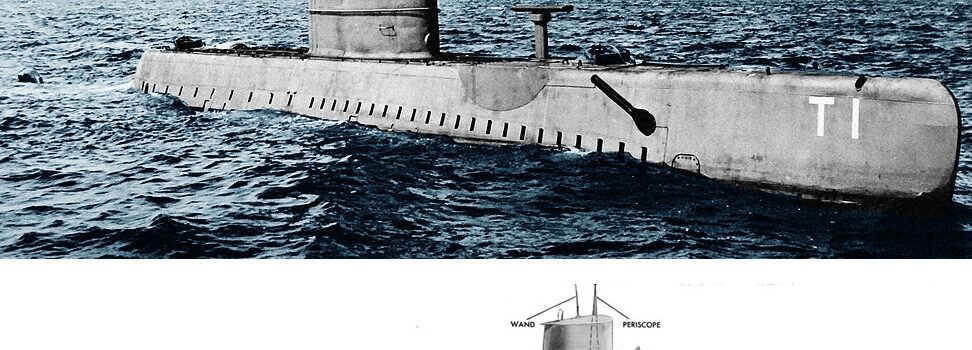
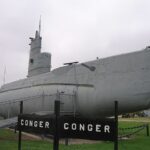

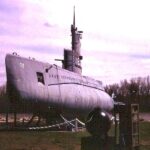
 Latest Facebook Entry -
Latest Facebook Entry -  X(Tweeter) Naval Encyclopedia's deck archive
X(Tweeter) Naval Encyclopedia's deck archive Instagram (@navalencyc)
Instagram (@navalencyc)





 Austrian Navy
Austrian Navy French Navy
French Navy Royal Navy
Royal Navy Armada Espanola
Armada Espanola K.u.K. Kriegsmarine
K.u.K. Kriegsmarine Dansk Marine
Dansk Marine Nautiko Hellenon
Nautiko Hellenon Koninklije Marine 1870
Koninklije Marine 1870 Marinha do Brasil
Marinha do Brasil Osmanlı Donanması
Osmanlı Donanması Marina Do Peru
Marina Do Peru Marinha do Portugal
Marinha do Portugal Regia Marina 1870
Regia Marina 1870 Nihhon Kaigun 1870
Nihhon Kaigun 1870 Preußische Marine 1870
Preußische Marine 1870 Russkiy Flot 1870
Russkiy Flot 1870 Svenska marinen
Svenska marinen Søværnet
Søværnet Union Navy
Union Navy Confederate Navy
Confederate Navy Armada de Argentina
Armada de Argentina Imperial Chinese Navy
Imperial Chinese Navy Marinha do Portugal
Marinha do Portugal Mexico
Mexico Kaiserliche Marine
Kaiserliche Marine 1898 US Navy
1898 US Navy Russkiy Flot
Russkiy Flot French Naval Aviation
French Naval Aviation Russian Naval Aviation
Russian Naval Aviation Sovietskiy Flot
Sovietskiy Flot Royal Canadian Navy
Royal Canadian Navy Royal Australian Navy
Royal Australian Navy RNZN Fleet
RNZN Fleet Chinese Navy 1937
Chinese Navy 1937 Kriegsmarine
Kriegsmarine Chilean Navy
Chilean Navy Danish Navy
Danish Navy Finnish Navy
Finnish Navy Hellenic Navy
Hellenic Navy Polish Navy
Polish Navy Romanian Navy
Romanian Navy Turkish Navy
Turkish Navy Royal Yugoslav Navy
Royal Yugoslav Navy Royal Thai Navy
Royal Thai Navy Minor Navies
Minor Navies Albania
Albania Austria
Austria Belgium
Belgium Columbia
Columbia Costa Rica
Costa Rica Cuba
Cuba Czechoslovakia
Czechoslovakia Dominican Republic
Dominican Republic Haiti
Haiti Hungary
Hungary Honduras
Honduras Estonia
Estonia Iceland
Iceland Eire
Eire Equador
Equador Iran
Iran Iraq
Iraq Latvia
Latvia Liberia
Liberia Lithuania
Lithuania Mandchukuo
Mandchukuo Morocco
Morocco Nicaragua
Nicaragua Persia
Persia San Salvador
San Salvador Sarawak
Sarawak Uruguay
Uruguay Venezuela
Venezuela Zanzibar
Zanzibar Warsaw Pact Navies
Warsaw Pact Navies Bulgaria
Bulgaria Hungary
Hungary

 Bundesmarine
Bundesmarine Dutch Navy
Dutch Navy Hellenic Navy
Hellenic Navy Marina Militare
Marina Militare Taiwanese Navy
Taiwanese Navy Chinese Navy
Chinese Navy Indian Navy
Indian Navy Indonesian Navy
Indonesian Navy JMSDF
JMSDF North Korean Navy
North Korean Navy Philippines Navy
Philippines Navy ROKN
ROKN IDF Navy
IDF Navy Royal New Zealand Navy
Royal New Zealand Navy Egyptian Navy
Egyptian Navy South African Navy
South African Navy

































 RN
RN
 Marine Nationale
Marine Nationale
 Soviet Navy
Soviet Navy
 dbodesign
dbodesign